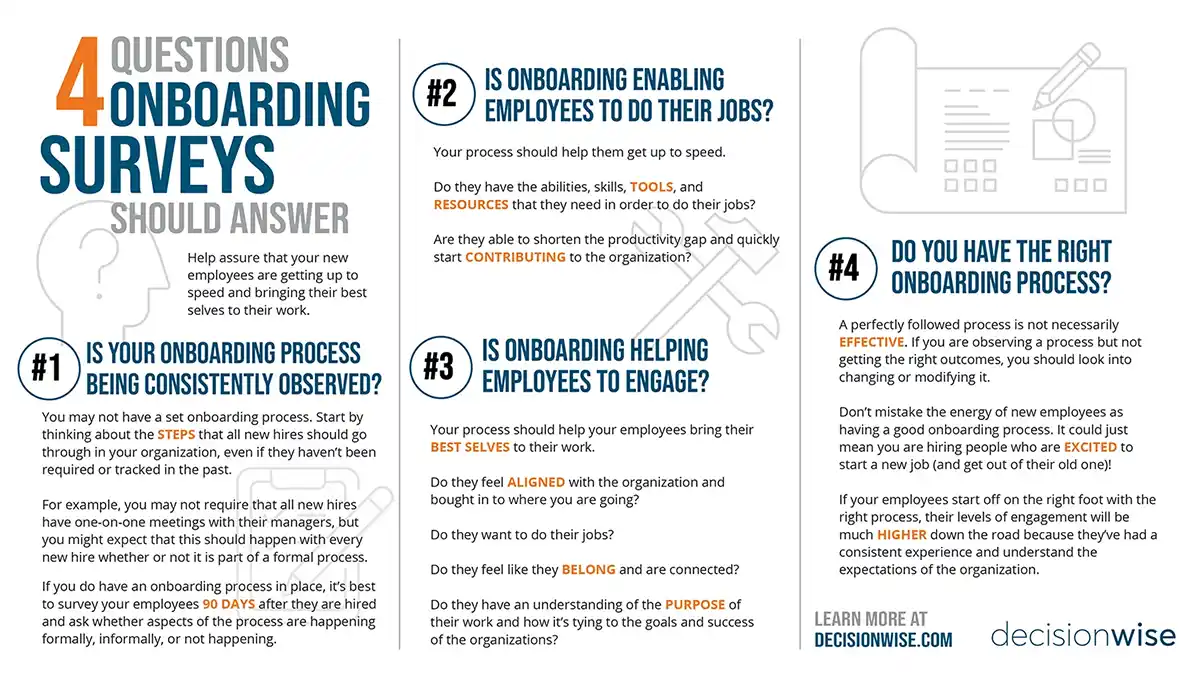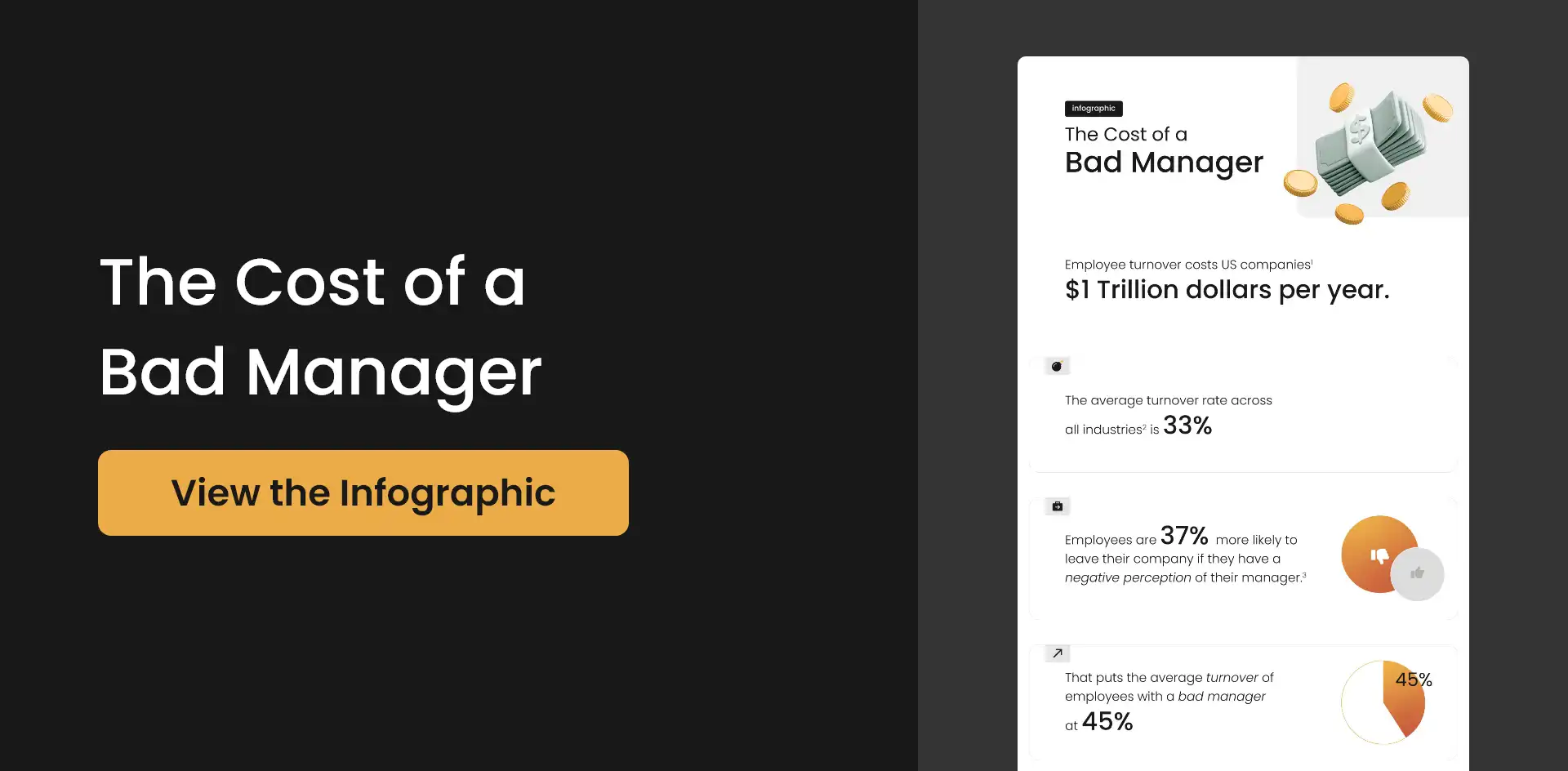Make sure you have the right process in place to allow your new employees to get up to speed and bring their best selves to their work.
Is your onboarding process being consistently observed?
You may not have a set onboarding process. Start by thinking about the steps that all new hires should go through in your organization, even if they haven’t been required or tracked in the past.
For example, you may not require that all new hires have one-on-one meetings with their managers, but you might expect that this should happen with every new hire whether or not it is part of a formal process.
If you do have an onboarding process in place, it’s best to survey your employees 90 days after they are hired and ask whether aspects of the process are happening formally, informally, or not happening.
Is onboarding enabling employees to do their jobs?
Your process should help them get up to speed.
Do they have the abilities, skills, tools, and resources that they need in order to do their jobs?
Are they able to shorten the productivity gap and quickly start contributing to the organization?
Is onboarding helping employees to engage?
Your process should help your employees bring their best selves to their work.
Do they feel aligned with the organization and bought in to where you are going?
Do they want to do their jobs?
Do they feel like they belong and are connected?
Do they have an understanding of the purpose of their work and how it’s tying to the goals and success of the organizations?
Do you have the right onboarding process?
A perfectly followed process is not necessarily effective. If you are observing a process but not getting the right outcomes, you should look into changing or modifying it.
Don’t mistake the energy of new employees as having a good onboarding process. It could just mean you are hiring people who are excited to start a new job (and get out of their old one)!
If your employees start off on the right foot with the right process, their levels of engagement will be much higher down the road because they’ve had a consistent experience and understand the expectations of the organization.




